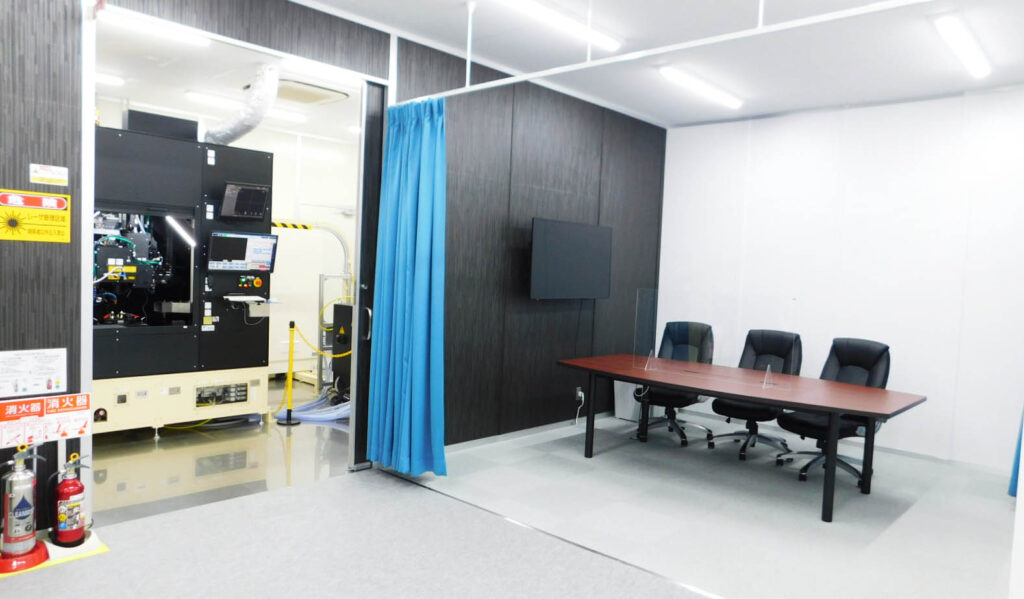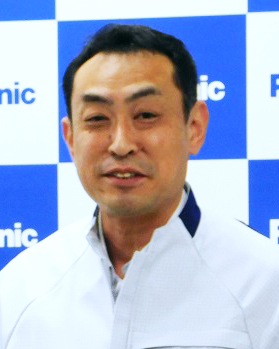ASIA ELECTRONICS INDUSTRYYOUR WINDOW TO SMART MANUFACTURING
Panasonic Lab Uses New Blue-Laser Processing Machine
Panasonic Smart Factory Solutions Co., Ltd. (PSFS) opened on Dec. 1 the Advanced Material Processing Connect Lab (AMP Connect Lab) at its office in Toyonaka City, Osaka Prefecture. The AMP Connect Lab is a process demonstration center for high-power, high-beam quality blue-laser processing machine.

The AMP Connect Lab has an area of about 312m2 and has three demonstration machines installed. One of them is a blue laser processing machine. An evaluation space with optical microscopes and 3D measuring instruments and an exhibition space for products are also available.
At the center, the company will work with customers to demonstrate the processing of copper materials using the new product. The company expects around 50 customers to visit the center by the time the blue laser processing machine is released.
Blue-Laser Processing Machine
The blue-laser machine features high light absorption coefficient for copper material and high beam quality. It is scheduled for release in the next fiscal year. It meets the rapidly increasing needs of batteries, motors, and modules for electric vehicles (EVs).

The developed blue laser processing machine uses wavelength synthesis technology of the direct diode laser (DDL). Therefore, oscillation at high output is possible while maintaining high beam quality. In heat conduction welding, keyhole welding, and cutting process, it can suppress the generation of porosity and spatter, perform processing with less thermal strain, and achieve strong bonding strength by deep penetration. It is especially good at copper processing. In confined parts of electronic equipment and electronic devices, it performs welding with a small spot diameter and deep penetration. This causes less heat effect on the surroundings.
This blue laser machine with external dimensions of 1030×1020×1130mm is planned to be released in 2022. The company targets sales of 500 units in 2030.
It features a rated output of 400W. The remote processing feature secures a sufficient distance between the oscillation end face of the laser’s optical output head and the object to be processed. It is expected to improve productivity in the mass production process. In addition, the use of a semiconductor laser with excellent light conversion efficiency can save energy. It can reduce CO2 emission in the manufacturing process due to the high light absorptivity of copper for the blue laser.
Takashi Otsuka, Director of the DDL Business Development Center, Panasonic Smart Factory Solutions said, “Recently, automobile manufacturing has changed from the arc welding to laser and arc welding. The need to use copper is growing due to environmental regulations and increasing demand for EVs. Our blue DDL can easily process copper material.”
Otsuka said the company’s new product has advantages over those of other companies. He said it is better in terms of wavelength synthesis technology, high beam quality, high output, and remote processing. These properties give strength to the product according to Otsuka.
Future Plans
In the future, the company plans to introduce a blue DDL verification machine with a kilowatt-class output to meet a wide range of processing needs. It will also work on application to multi-materials including materials other than copper. It will aim for the development of construction methods, such as optical shaping of metals and annealing.

Akihiro Akiyama, President and CEO of PSFS, said: “In April 2022, we will integrate four corporations in Japan and change the company name to Panasonic Connect Co., Ltd. The goal is to create value together with customers and expand the layer of the value provided. In 2030, we will change our business to one with a higher profit structure. We will provide value together with our customers by firmly connecting our equipment with the system’s strength.”




